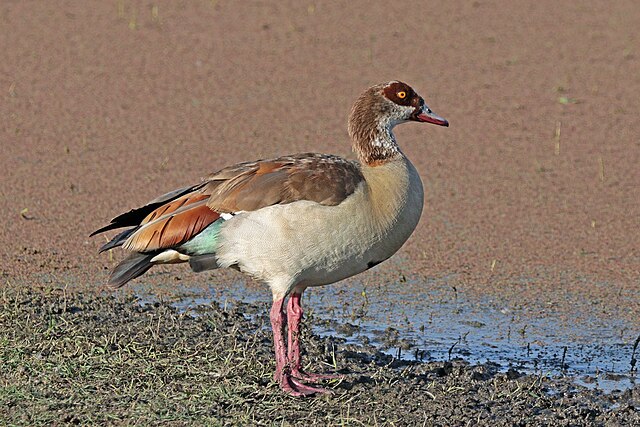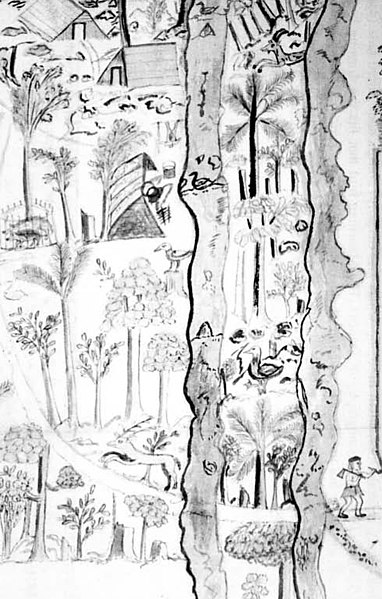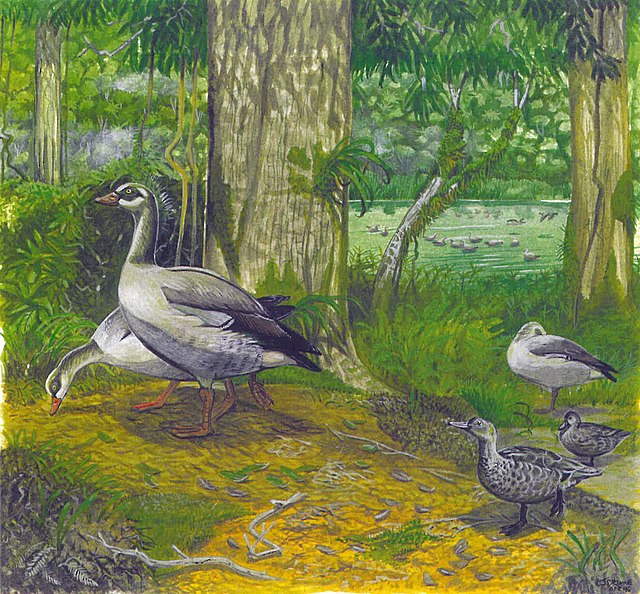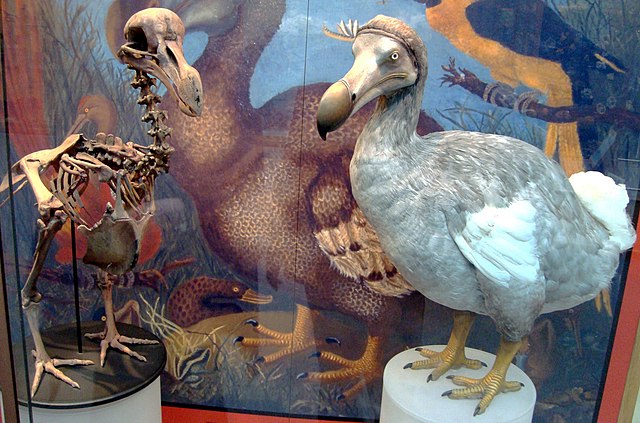The Mauritius sheldgoose, also known as the Mauritius shelduck, is an extinct species of sheldgoose that was endemic to the island of Mauritius. While geese were mentioned by visitors to Mauritius in the 17th century, few details were provided by these accounts. In 1893, a carpometacarpus wing-bone and a pelvis from the Mare aux Songes swamp were used to name a new species of comb duck, Sarcidiornis mauritianus. These bones were connected to the contemporary accounts of geese and later determined to belong to a species related to the Egyptian goose and placed in the sheldgoose genus Alopochen. The Mauritius and Réunion sheldgoose may have descended from Egyptian geese that colonised the Mascarene islands.
Mauritius sheldgoose
The related Egyptian goose
Illustration of a Dutch farm on Mauritius from 1670, which may include the only contemporary depiction of a Mauritius sheldgoose (between the streams, lower middle right)
Life restoration of Mauritius sheldgeese (left) and Mascarene teals (lower right) by Julian P. Hume
The dodo is an extinct flightless bird that was endemic to the island of Mauritius, which is east of Madagascar in the Indian Ocean. The dodo's closest relative was the also-extinct and flightless Rodrigues solitaire. The two formed the subfamily Raphinae, a clade of extinct flightless birds that were a part of the family which includes pigeons and doves. The closest living relative of the dodo is the Nicobar pigeon. A white dodo was once thought to have existed on the nearby island of Réunion, but it is now believed that this assumption was merely confusion based on the also-extinct Réunion ibis and paintings of white dodos.
Dodo
The Nicobar pigeon is the closest living relative of the dodo
1848 lithograph of the Oxford specimen's foot, which has been used to sample DNA for genetic analyses
1601 engraving showing Dutch activities on the shore of Mauritius and the first published depiction of a dodo on the left (2, called "Walchvoghel")








